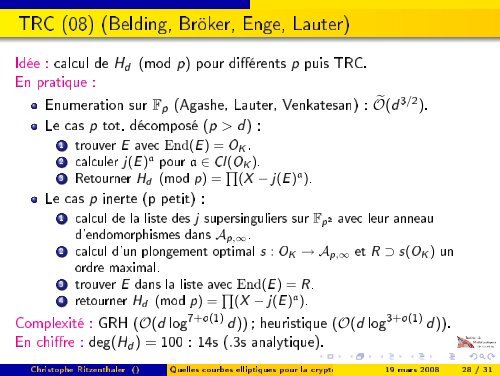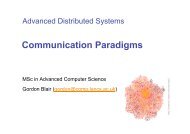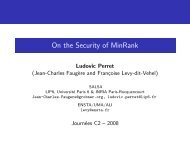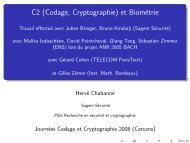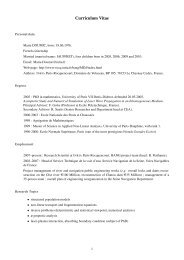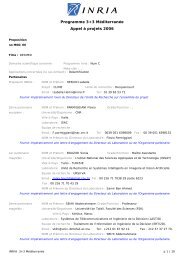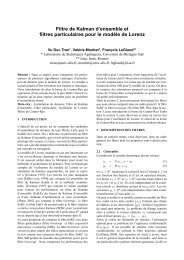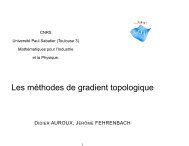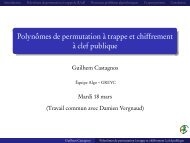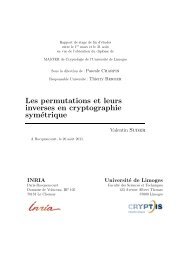Quelles courbes elliptiques pour la cryptographie ? - Institut de ...
Quelles courbes elliptiques pour la cryptographie ? - Institut de ...
Quelles courbes elliptiques pour la cryptographie ? - Institut de ...
You also want an ePaper? Increase the reach of your titles
YUMPU automatically turns print PDFs into web optimized ePapers that Google loves.
TRC (08) (Belding, Bröker, Enge, Lauter)<br />
Idée : calcul <strong>de</strong> H d (mod p) <strong>pour</strong> diérents p puis TRC.<br />
En pratique :<br />
Enumeration sur F p (Agashe, Lauter, Venkatesan) : Õ(d 3/2 ).<br />
Le cas p tot. décomposé (p > d) :<br />
1 trouver E avec End(E) = O K .<br />
2 calculer j(E) a <strong>pour</strong> a ∈ Cl(O K ).<br />
3 Retourner H d (mod p) = ∏ (X − j(E) a ).<br />
Le cas p inerte (p petit) :<br />
1 calcul <strong>de</strong> <strong>la</strong> liste <strong>de</strong>s j supersinguliers sur F p 2 avec leur anneau<br />
d'endomorphismes dans A p,∞ .<br />
2 calcul d'un plongement optimal s : O K → A p,∞ et R ⊃ s(O K ) un<br />
ordre maximal.<br />
3 trouver E dans <strong>la</strong> liste avec End(E) = R.<br />
4 retourner H d (mod p) = ∏ (X − j(E) a ).<br />
Complexité : GRH (O(d log 7+o(1) d)) ; heuristique (O(d log 3+o(1) d)).<br />
En chire : <strong>de</strong>g(H d ) = 100 : 14s (.3s analytique).<br />
Christophe Ritzenthaler () <strong>Quelles</strong> <strong>courbes</strong> <strong>elliptiques</strong> <strong>pour</strong> <strong>la</strong> <strong>cryptographie</strong> ? 19 mars 2008 28 / 31


